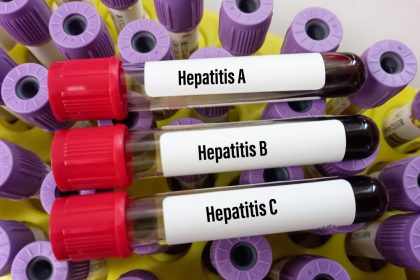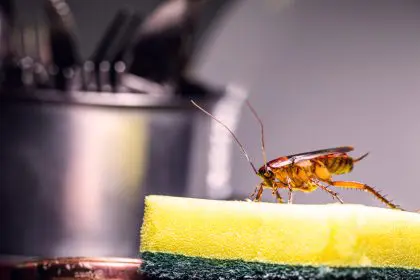Ever wondered why that convenient plastic container might deserve a side-eye? The stuff we use daily without a second thought could be doing more than just holding our leftovers or making our lives easier. From your morning coffee cup to the wrapper around your sandwich, plastics have quietly slipped into every corner of our lives. But while we’ve been enjoying the convenience, our hormones might be paying the price.
The plastic invasion we never noticed
Remember when milk came in glass bottles and food was wrapped in paper? Those days feel like ancient history now. Plastic has become so ubiquitous that we barely register its presence anymore. It’s in our kitchens, bathrooms, offices, and even our clothing. The average person might touch dozens of plastic items before breakfast alone.
Think about your morning routine. That toothbrush? Plastic. Shower curtain? Plastic. The container holding your breakfast yogurt? You guessed it. By the time you head out the door with your conveniently packaged lunch in a plastic container and your water in a plastic bottle, you’ve already had significant contact with numerous plastic products.
This material that’s supposed to make our lives easier might actually be complicating things on a biological level. And the kicker? We invited it all in without realizing what might tag along for the ride.
The hormone hijackers hiding in plain sight
Your endocrine system is like the chemical messaging service of your body. It produces hormones that regulate everything from your metabolism and sleep cycles to reproduction and mood. It’s an incredibly delicate system where even tiny changes can have ripple effects throughout your entire body.
Many everyday plastics contain chemicals that can mimic hormones or interfere with hormone production and action. These chemicals have earned the name “endocrine disruptors” because of their ability to mess with this crucial bodily system.
The most notorious among these is Bisphenol A, or BPA, which has become something of a household name in recent years. This chemical can imitate estrogen, potentially throwing off the hormonal balance in both men and women. But BPA isn’t alone. Its popular replacements like BPS and BPF may cause similar problems. Then there are phthalates, which make plastics flexible, and flame retardants added to many plastic products.
The troubling part? These chemicals don’t stay neatly contained in the plastic. They can leach out, especially when plastics are heated, scratched, or exposed to acidic foods. That means they can migrate into your food and drinks and ultimately into your body.
And contrary to what you might think, you don’t need to be chewing on a plastic fork to be exposed. These chemicals can enter your body through:
Food and drinks stored in plastic containers Absorption through your skin from personal care products Inhalation of household dust containing these chemicals Water flowing through plastic pipes
It’s a stealth invasion happening right under our noses, one sip from a plastic bottle at a time.
What happens when hormones go haywire
So these chemicals get into our systems. So what? The effects might be more far-reaching than you’d expect, and they don’t always announce themselves with obvious symptoms.
For women, hormone disruption can show up as irregular periods, fertility struggles, or worsened PMS symptoms. In men, it might manifest as reduced sperm quality or changes in reproductive development.
And it’s not just adults who are vulnerable. Developing fetuses and children can be particularly sensitive to hormone-disrupting chemicals, as their bodies are still forming and their hormonal systems establishing crucial patterns.
But reproduction is just one area affected by hormonal disruption. These chemicals have been linked to:
Metabolic issues like weight gain and insulin resistance Thyroid function problems affecting energy and metabolism Altered brain development in children Increased risk for certain hormone-related cancers Immune system dysfunction
The challenging part is that these effects can be subtle and develop slowly over time, making it difficult to connect the dots between exposure and outcome. It’s not like getting food poisoning where the cause and effect are clear and immediate.
Your plastic footprint and how to shrink it
Before you panic and try to purge all plastic from your life, take a deep breath. Living completely plastic-free in today’s world isn’t realistic for most people. Instead, focus on smart reductions that can significantly lower your exposure to the most problematic chemicals.
The kitchen is often ground zero for plastic exposure through food, so start there:
Switch to glass or stainless steel food storage containers Never microwave food in plastic containers, even if they claim to be “microwave-safe” Ditch plastic wrap in favor of beeswax wraps or silicone covers Replace plastic cooking utensils with wood, bamboo, or stainless steel alternatives Filter your tap water instead of buying bottled water
Many personal care products come in plastic packaging and contain phthalates that help fragrances stick around longer:
Look for fragrance-free products or those scented with essential oils Choose products in glass, metal, or paper packaging when possible Make simple products like body scrubs at home using natural ingredients Try bar soap, shampoo, and conditioner to reduce plastic bottle use
Every purchase is a vote for the kind of world you want to live in:
Buy fresh, unpackaged produce instead of pre-cut items in plastic containers Bring your own cloth bags and produce bags to the grocery store Choose cardboard, glass, or paper packaging over plastic when available Buy in bulk using your own containers to reduce packaging waste
The key is to start somewhere rather than trying to change everything at once. Pick one area, like your water bottle or food storage containers, and make that switch first. Then gradually expand your plastic reduction efforts as your budget and lifestyle allow.
The bigger picture beyond personal choices
While individual actions matter, the plastic problem is also systemic. Manufacturers continue to use hormone-disrupting chemicals because they’re cheap and effective for certain product features, and regulations often lag behind scientific evidence.
Knowledge is power when navigating a world full of potentially problematic products:
Research brands that prioritize safer materials Learn to read labels and recognize red-flag ingredients Stay updated on new research about plastic alternatives Share what you learn with friends and family
Beyond your personal choices, consider using your voice to advocate for better protection from hormone-disrupting chemicals:
Support organizations working on plastic pollution and chemical safety Contact companies to ask about their plans to remove harmful chemicals Engage with local representatives about stronger chemical safety laws
The good news is that our bodies have remarkable abilities to recover when exposure to hormone disruptors is reduced. Even small changes can help your endocrine system function more as nature intended.
Finding balance in a plastic world
The relationship between plastics and hormonal health isn’t black and white. Not all plastics are created equal, and factors like frequency of exposure, individual susceptibility, and overall health play important roles in determining risk.
The goal isn’t to demonize all plastic or to make you feel guilty about every plastic item you use. Instead, it’s about becoming more mindful of where plastic fits in your life and making intentional choices about which exposures you can reasonably reduce.
In a world where plastic seems unavoidable, focus on progress rather than perfection. Each small change adds up, not just for your hormone health but for the planet as well. And isn’t that worth trading a little convenience for?
Your hormones just might thank you for giving those plastic containers a second thought. And who knows? You might find that glass container or stainless steel water bottle isn’t just better for your body, but more satisfying to use as well.


















